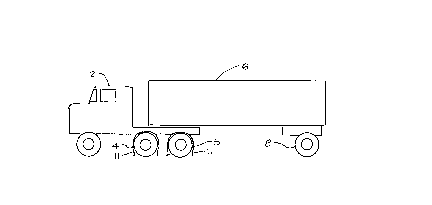Une partie des informations de ce site Web a été fournie par des sources externes. Le gouvernement du Canada n'assume aucune responsabilité concernant la précision, l'actualité ou la fiabilité des informations fournies par les sources externes. Les utilisateurs qui désirent employer cette information devraient consulter directement la source des informations. Le contenu fourni par les sources externes n'est pas assujetti aux exigences sur les langues officielles, la protection des renseignements personnels et l'accessibilité.
L'apparition de différences dans le texte et l'image des Revendications et de l'Abrégé dépend du moment auquel le document est publié. Les textes des Revendications et de l'Abrégé sont affichés :
| (12) Brevet: | (11) CA 2033216 |
|---|---|
| (54) Titre français: | PINCE A RESSORT UNITAIRE EN U ET METHODE POUR L'INSTALLATION DE CHAINES D'ADHERENCE. |
| (54) Titre anglais: | U-SHAPED UNITARY SPRING CLIP AND METHOD FOR INSTALLING TIRE CHAINS |
| Statut: | Périmé et au-delà du délai pour l’annulation |
| (51) Classification internationale des brevets (CIB): |
|
|---|---|
| (72) Inventeurs : |
|
| (73) Titulaires : |
|
| (71) Demandeurs : | |
| (74) Agent: | OYEN WIGGS GREEN & MUTALA LLP |
| (74) Co-agent: | |
| (45) Délivré: | 1997-08-12 |
| (22) Date de dépôt: | 1990-12-27 |
| (41) Mise à la disponibilité du public: | 1992-06-28 |
| Requête d'examen: | 1992-06-05 |
| Licence disponible: | Oui |
| Cédé au domaine public: | S.O. |
| (25) Langue des documents déposés: | Anglais |
| Traité de coopération en matière de brevets (PCT): | Non |
|---|
| (30) Données de priorité de la demande: | S.O. |
|---|
Méthode et appareil pour l'installation de chaînes à neige sur de gros pneus. La présente invention a trait à un outil pour l'installation de chaînes d'adhérence sur de gros pneus au moyen d'une barre résiliente en acier profilé. Le dispositif comprend une barre d'acier en U avec une base et des branches courbées vers l'intérieur environ à partir de leur milieu jusqu'à leurs extrémités. Les branches sont faites de façon à ne pas marquer ni couper les flancs des pneus sur lesquels le dispositif peut être installé. Une extrémité des crochets d'une chaîne d'adhérence est insérée aux coins extérieurs et sur l'outil qui s'adapte de façon amovible au pneu ou aux pneus jumelés en retenant la chaîne par adhérence aux flancs du pneu ou des pneus.
The present invention relates to a tool for
mounting tire chains upon large tires by means of a shaped
resilient steel bar. The device comprises a U-shaped steel
bar with a base and arms with inward curvatures from about
the mid-point of each of the arms of the device and extend-
ing to the ends of said arms. The arms are formed so as to
avoid marking or cutting into the soft sidewall sections of
the pneumatic tires upon which the device might be in-
stalled. One end of a tire chain's hooks are inserted at
the outer corners and upon the tool which is removably
mounted upon the tire or dual-wheeled tire configurations
frictionally grasping the outer sidewalls of said tire or
tires and the chain.
Note : Les revendications sont présentées dans la langue officielle dans laquelle elles ont été soumises.
Note : Les descriptions sont présentées dans la langue officielle dans laquelle elles ont été soumises.

2024-08-01 : Dans le cadre de la transition vers les Brevets de nouvelle génération (BNG), la base de données sur les brevets canadiens (BDBC) contient désormais un Historique d'événement plus détaillé, qui reproduit le Journal des événements de notre nouvelle solution interne.
Veuillez noter que les événements débutant par « Inactive : » se réfèrent à des événements qui ne sont plus utilisés dans notre nouvelle solution interne.
Pour une meilleure compréhension de l'état de la demande ou brevet qui figure sur cette page, la rubrique Mise en garde , et les descriptions de Brevet , Historique d'événement , Taxes périodiques et Historique des paiements devraient être consultées.
| Description | Date |
|---|---|
| Le délai pour l'annulation est expiré | 2001-12-27 |
| Lettre envoyée | 2000-12-27 |
| Inactive : Taxe finale reçue | 1997-09-05 |
| Accordé par délivrance | 1997-08-12 |
| Inactive : CIB attribuée | 1997-07-21 |
| Inactive : CIB en 1re position | 1997-07-21 |
| Inactive : CIB enlevée | 1997-07-21 |
| Inactive : Dem. traitée sur TS dès date d'ent. journal | 1997-06-10 |
| Inactive : Renseign. sur l'état - Complets dès date d'ent. journ. | 1997-06-10 |
| Préoctroi | 1997-04-11 |
| Un avis d'acceptation est envoyé | 1997-01-21 |
| Demande publiée (accessible au public) | 1992-06-28 |
| Toutes les exigences pour l'examen - jugée conforme | 1992-06-05 |
| Exigences pour une requête d'examen - jugée conforme | 1992-06-05 |
Il n'y a pas d'historique d'abandonnement
| Type de taxes | Anniversaire | Échéance | Date payée |
|---|---|---|---|
| Taxe finale - petite | 1997-04-11 | ||
| TM (brevet, 7e anniv.) - petite | 1997-12-29 | 1997-12-29 | |
| TM (brevet, 8e anniv.) - petite | 1998-12-29 | 1998-12-07 | |
| TM (brevet, 9e anniv.) - petite | 1999-12-27 | 1999-11-22 |
Les titulaires actuels et antérieures au dossier sont affichés en ordre alphabétique.
| Titulaires actuels au dossier |
|---|
| JOSEPH DESCHENES |
| Titulaires antérieures au dossier |
|---|
| S.O. |